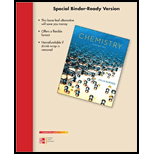
Concept explainers
Interpretation:
The given reaction is to be completed by unshared electron pairs and formal charges, and the curved arrows are to be represented in the reaction.
Concept introduction:
Whena lone pair of electrons is not considered to participate in the covalent bond, it is known as an unshared pair of electrons.
All those compounds that have a tendency of attracting electron rich center are known as electrophiles. It is considered a positivelycharged or neutral species. Lewis acid isan electrophile.
A coordinate covalent bond is the one in which both the electrons shared in a covalent bond come from the same atom, called as a donor atom such that one of the shared pair of electrons now occupies an empty orbital of the acceptor atom.
Movement of the electron is shown by curved arrows in the compound.
Want to see the full answer?
Check out a sample textbook solution
Chapter 25 Solutions
Chemistry - With Access (Looseleaf) (Custom)
- Please help me to draw the expanded, condensed and line/skeleton structure of the following alkenes and alkynes.arrow_forwardDraw a resonance structure, complete with all formal charges and lone (unshared) electron pairs, that shows the resonance interaction of the nitro with the para position in nitrobenzene.arrow_forwardDraw and name all aromatic compounds with the formula C7H7Clarrow_forward
- Would someone be able to draw the pictures of primary, secondary, and tertiary radicals for regular structures, allylic structures, and benzylic structures? I am having trouble visualizing.arrow_forwardComplete these structures by adding electrons, in the form of dots, as needed. see attachedarrow_forwardWhich structure is eclipsed hexane?arrow_forward

 Organic Chemistry: A Guided InquiryChemistryISBN:9780618974122Author:Andrei StraumanisPublisher:Cengage Learning
Organic Chemistry: A Guided InquiryChemistryISBN:9780618974122Author:Andrei StraumanisPublisher:Cengage Learning

